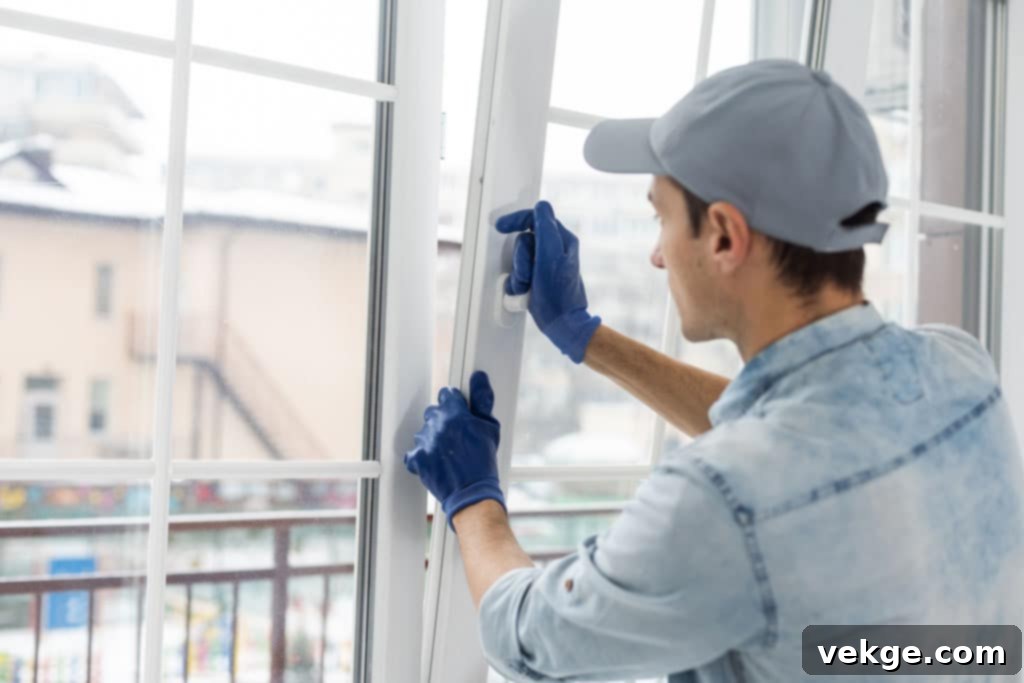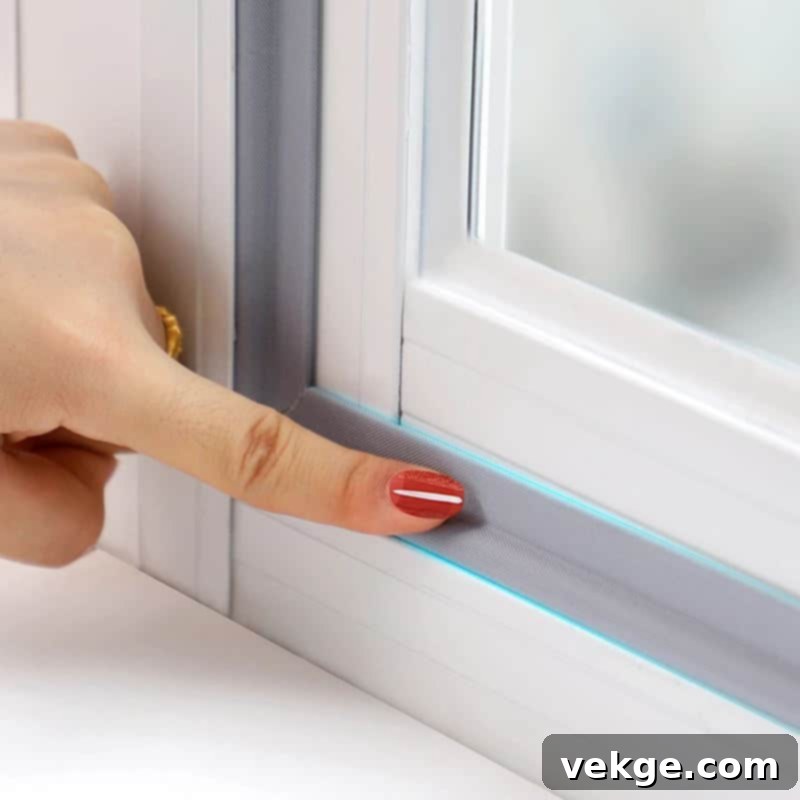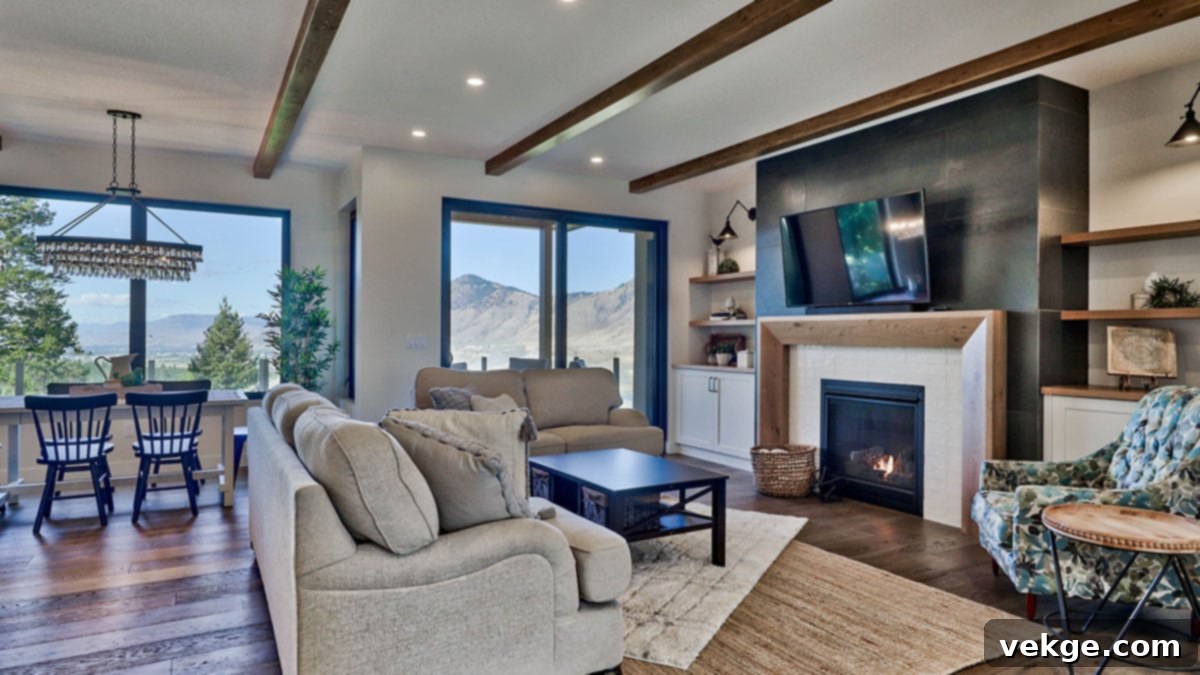Transform Your Home: The Essential Guide to Energy-Efficient Windows, Doors, and Skylights
In today’s world, energy efficiency is far more than a passing trend; it’s a fundamental pillar of modern home design and renovation. Homeowners are increasingly prioritizing energy-efficient upgrades, driven by the compelling dual benefits of significantly reducing their environmental footprint and slashing monthly utility bills. These improvements offer not just immediate financial relief but also contribute to a more sustainable lifestyle and a comfortable living environment for years to come.
Among the various components that contribute to a home’s overall energy performance, windows, doors, and skylights stand out as particularly critical. They act as key interfaces between your indoor and outdoor environments, playing a pivotal role in maintaining consistent temperatures and preventing energy loss. This comprehensive guide will delve into how upgrading these vital features can dramatically enhance your home’s energy performance, delivering both tangible immediate benefits and substantial long-term savings.
The Fundamentals of Energy Efficiency in Home Design: Creating a Thermal Envelope
At its core, energy efficiency in homes is about creating a robust “thermal envelope” – a barrier that minimizes wasted energy by keeping heating and cooling efforts contained within the living space. This involves ensuring that conditioned air stays inside, and unconditioned air, along with unwanted heat or cold, stays out. Proper insulation throughout the walls, roof, and foundation, combined with the strategic use of high-performance building materials, are paramount.
A well-insulated and properly sealed home functions much like a perfectly crafted thermos, adeptly maintaining its internal environment at a consistent, comfortable temperature. This stability means your heating, ventilation, and air conditioning (HVAC) systems don’t have to work overtime, leading to reduced energy consumption, lower operational costs, and extended equipment lifespan. Windows, doors, and skylights are crucial breach points in this thermal envelope, and their efficiency dictates much of a home’s overall energy performance.
Windows: A Gateway to Enhanced Energy Savings and Comfort

Windows are often considered the weakest link in a home’s thermal envelope, accounting for a significant portion of heat loss in winter and heat gain in summer. However, modern energy-efficient windows are engineered to dramatically mitigate this. The most effective options feature double-glazed or even triple-glazed panes, where two or three layers of glass are separated by an inert gas, such as argon, krypton, or xenon. These gases are denser than air and act as superior insulators, significantly reducing heat conduction through the window.
Further enhancing their efficiency, many high-performance windows are coated with a microscopically thin, transparent layer of low-emissivity (low-E) material. This coating reflects interior temperatures back inside during colder months, preventing warmth from escaping, and similarly reflects solar radiation away during the summer, keeping the indoor environment cooler. This dual action dramatically minimizes the transfer of heat, ensuring your home remains comfortable year-round with less reliance on your HVAC system.
Beyond the glass, advancements in window technology extend to the frames and sashes themselves. Materials like vinyl, fiberglass, and even advanced wood composites offer superior insulation properties compared to older aluminum frames, which are prone to thermal bridging. These modern frames are designed with multiple chambers and insulating inserts to reduce heat transfer through the non-glass components. However, the true potential of these advanced windows is only unlocked through professional installation. Expert installers ensure every seal is perfect, every frame fits precisely, and critical air sealing is applied around the window perimeter, thereby eliminating any possibility of energy leaks and guaranteeing optimal, long-term performance.
When selecting windows, homeowners should look for National Fenestration Rating Council (NFRC) labels, which provide critical performance ratings like U-factor (measuring heat loss/gain), Solar Heat Gain Coefficient (SHGC, measuring solar radiation blockage), Visible Transmittance (VT, measuring light passage), and Air Leakage (AL). Understanding these metrics relative to your local climate is key to making an informed decision that maximizes energy savings and comfort.
Doors: Sealing the Deal on Energy Efficiency

Just like windows, entry and patio doors are critical entry and exit points for energy in your home. An old, uninsulated, or poorly sealed door can be a major source of drafts and thermal loss, compromising your home’s comfort and driving up energy costs. Modern energy-efficient doors are specifically engineered to combat this, featuring insulated cores and advanced materials that significantly reduce thermal bridging, effectively blocking the transfer of heat and cold.
The core of an energy-efficient door often contains polyurethane or polystyrene foam, which provides a high R-value (a measure of thermal resistance). Exterior materials, such as fiberglass, steel, or solid wood, are chosen not only for their durability, security, and aesthetic appeal but also for their inherent insulation properties. Fiberglass doors, for instance, are highly resistant to dents, rot, and rust, and offer excellent thermal performance. Steel doors provide robust security and good insulation, while high-quality wood doors can offer natural beauty alongside decent thermal properties when properly sealed and maintained.
Beyond the door slab itself, the sealing mechanisms are equally important. High-quality weatherstripping around the perimeter of the door frame and improved threshold designs create a tight, continuous seal when the door is closed. These components work in tandem to prevent air infiltration, ensuring that the gap between the door and its frame is tightly closed off from the elements. For patio and sliding glass doors, multi-pane glazing, low-E coatings, and insulated frames are just as crucial as they are for windows.
However, even the most technologically advanced door will underperform if not installed correctly. Professional door installation is paramount to achieve an airtight fit, eliminate drafts, and prevent energy leaks. This meticulous process involves proper framing, shimming, insulation of the surrounding cavity, and precise application of sealants. Investing in professional installation isn’t merely about saving energy; it’s about enhancing your home’s security, reducing noise infiltration, and ensuring a comfortable, durable, and energy-efficient living environment for decades.
Skylights: Brightening Up with Energy Efficiency and Natural Light
Skylights offer a unique and compelling blend of aesthetic enhancement and practical energy efficiency, transforming interior spaces with abundant natural light. By strategically introducing daylight, skylights can significantly reduce the need for artificial lighting during the day, leading to measurable energy savings. Moreover, many modern skylights also offer ventilation capabilities, allowing warm, stale air to escape and cool, fresh air to enter, which can reduce the reliance on air conditioning during milder weather.
To maximize energy performance, energy-efficient skylights incorporate features similar to high-performance windows. This includes double or even triple glazing with inert gas fills (like argon or krypton) between the panes, as well as heat-reflective or low-E coatings. These advanced glazings are designed to harness the sun’s natural light and warmth in colder months, providing passive solar heating, while simultaneously minimizing unwanted heat gain during hotter periods. This thoughtful design helps maintain a stable indoor temperature, reducing the workload on your HVAC system.
Innovative features further amplify the energy-saving potential of skylights. Built-in blinds or shades, often operated remotely or even automatically, provide customizable control over light and solar heat gain. Venting skylights, which can be opened to allow air circulation, are particularly effective in promoting natural ventilation and creating a chimney effect to exhaust hot air. Smart skylights can even integrate with home automation systems, adjusting their tint or opening based on sunlight, temperature, or humidity levels, offering dynamic energy efficiency tailored to real-time conditions.
The positioning and sizing of skylights are also crucial considerations. Strategic placement can maximize daylight harvesting and solar heating benefits in winter, while careful orientation can help mitigate excessive heat gain in summer. However, the full realization of these benefits hinges on expert installation. Proper sealing, flashing, and insulation around the skylight opening are essential to prevent unwanted heat loss or gain, as well as to guard against moisture infiltration. Professional installation ensures that skylights are correctly integrated into the home’s thermal envelope, delivering their intended energy savings, comfort enhancements, and long-term durability without compromise.
Financial Incentives and Long-Term Benefits: Making the Investment Pay Off
While the initial cost of energy-efficient windows, doors, and skylights might seem higher than standard options, the long-term savings and available financial incentives can significantly offset this investment, making it a highly attractive proposition. Governments at federal, state, and local levels frequently offer a variety of programs to encourage homeowners to adopt more sustainable practices. These can include valuable tax credits for specific energy-saving improvements, rebates for purchasing ENERGY STAR® certified products, and even grants for comprehensive home energy upgrades.
Beyond governmental programs, many utility companies recognize the benefits of reduced energy demand and, consequently, offer their own incentives. These often come in the form of rebates for installing high-efficiency windows, doors, or skylights, or even low-interest loans for such upgrades. Homeowners are strongly encouraged to research the specific programs available in their region, as these can dramatically reduce the net cost of improvements and accelerate the return on investment.
The financial benefits extend far beyond direct incentives and lower monthly utility bills. Energy-efficient upgrades substantially increase your home’s value, making it a smart investment for the future. In today’s competitive real estate market, prospective buyers are increasingly discerning, actively seeking homes with lower operating costs and a smaller carbon footprint. Properties equipped with modern, energy-efficient features are often perceived as more valuable, requiring less maintenance, and offering superior comfort, thereby enhancing their marketability and command a premium price. Furthermore, a comprehensive energy audit can help homeowners identify the most impactful upgrades, ensuring that every dollar invested yields the maximum possible return in terms of savings and comfort. This commitment to efficiency benefits not only the current homeowner but also adds significant appeal if the home is put on the market, proving that sustainability is also financially savvy.
Choosing the Right Products for Your Home: A Tailored Approach
Selecting the ideal energy-efficient windows, doors, and skylights requires a thoughtful consideration of your home’s unique needs, architectural style, and, crucially, your local climate. There’s no one-size-fits-all solution; what works best in a perpetually cold climate might not be optimal for a region with extreme heat and humidity. Therefore, it’s essential to look for products with high energy performance ratings that are specifically suited to your home’s aesthetic and environmental conditions.
Key energy performance ratings, such as the U-factor and Solar Heat Gain Coefficient (SHGC), are critical indicators provided by organizations like the National Fenestration Rating Council (NFRC). The U-factor measures how well a product prevents heat from escaping or entering your home; a lower U-factor indicates better insulation. The SHGC, on the other hand, quantifies how much solar radiation passes through a product as heat; a lower SHGC means greater shading ability, which is vital in hot climates to reduce cooling loads. Understanding these metrics and how they relate to your region’s climate challenges—whether it’s managing heat loss in winter, heat gain in summer, or both—is paramount.
Beyond these primary ratings, factors like Visible Transmittance (VT), which indicates how much light comes through, and Condensation Resistance (CR), which measures a product’s ability to resist moisture build-up, should also be considered. Consulting with experienced professionals, such as certified energy auditors or reputable contractors specializing in fenestration, can provide invaluable insights. They can assess your home’s specific vulnerabilities, recommend the best products for your situation, and explain the intricacies of performance ratings. Experts can also advise on the latest technologies and innovations in the market, from durable frame materials like fiberglass and vinyl to cutting-edge smart windows that automatically adjust their tint based on sunlight exposure, offering dynamic energy efficiency and enhanced comfort.
By carefully tailoring your product selection to your home’s individual requirements, regional climate, and leveraging the latest energy-saving technology, you ensure a wise investment. This meticulous approach guarantees that your upgrades will deliver maximum energy efficiency benefits, translating into superior comfort, substantial savings, and a tangible contribution to environmental sustainability.
Embracing a Sustainable Future Through Energy-Efficient Home Upgrades
The journey toward a more energy-efficient home is a multi-faceted one, with windows, doors, and skylights serving as pivotal components. By making informed choices about the right products and, crucially, investing in professional, high-quality installation, homeowners can unlock a wealth of benefits. These include significant reductions in energy consumption and associated utility bills, a dramatic enhancement in indoor comfort levels, and a measurable increase in their property’s market value. These upgrades are not merely expenses but rather strategic, long-term investments in your home’s future, contributing to a more sustainable, cost-effective, and enjoyable living environment.
Beyond the immediate personal gains, investing in energy efficiency is a powerful commitment to a healthier planet and a more sustainable way of living. Every energy-efficient improvement contributes to reducing your household’s carbon footprint, lessening the demand for fossil fuels, and promoting a greener, more responsible approach to resource consumption. By prioritizing these home improvements, you also set a valuable example for your community and future generations, demonstrating the tangible benefits of sustainable living and inspiring others to follow suit.
Furthermore, the landscape of energy-efficient technology is continually evolving. As research and innovation advance, the potential for even greater efficiency, smart integration, and deeper savings will continue to grow, making now an ideal time to invest in these critical home upgrades. Whether your primary motivation is to reduce your carbon footprint, significantly lower your utility bills, or enhance your home’s marketability and comfort, energy-efficient windows, doors, and skylights are indispensable components that will help you achieve your goals and step confidently into a more sustainable future. Start planning your energy-efficient home upgrades today and make a lasting impact.
